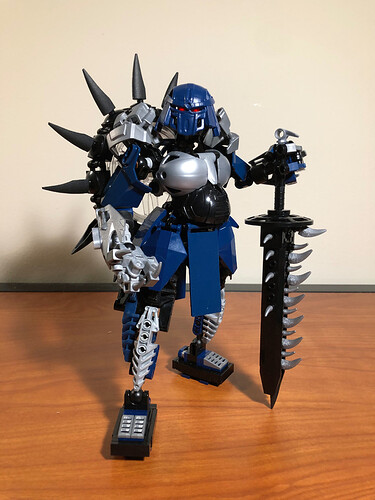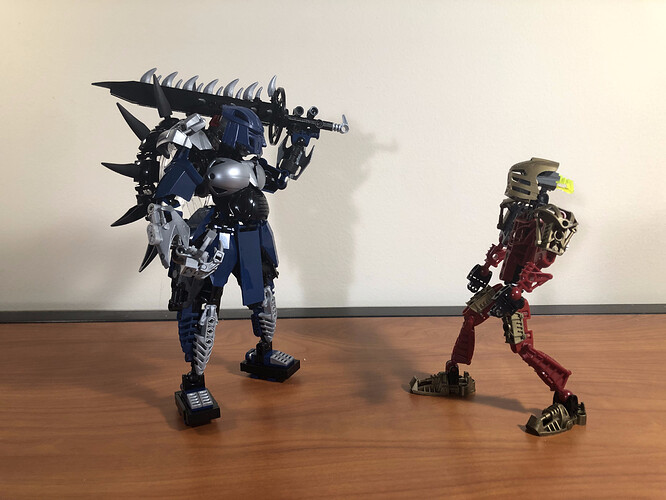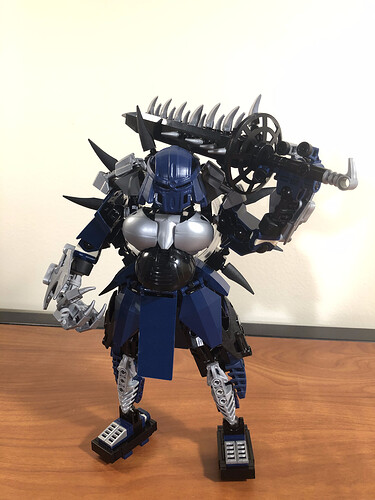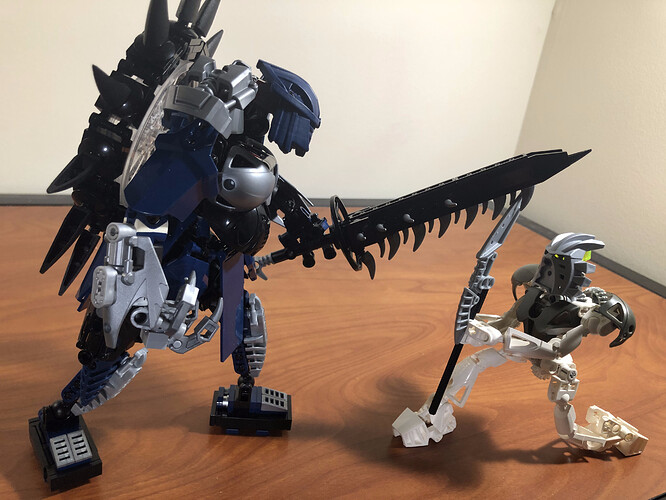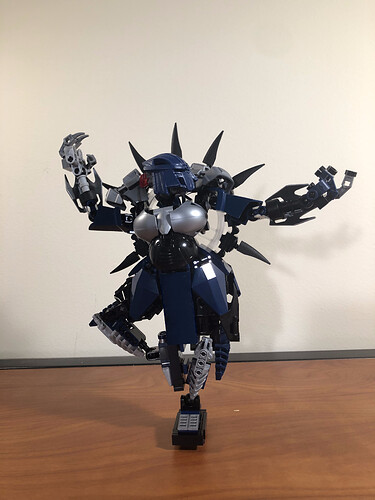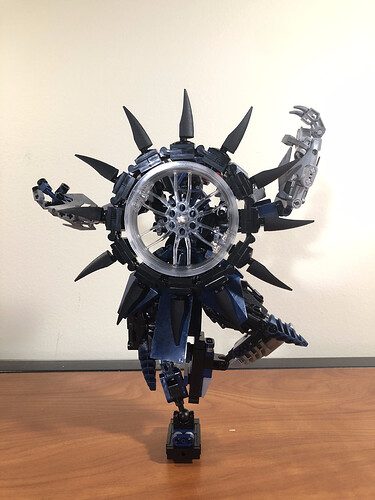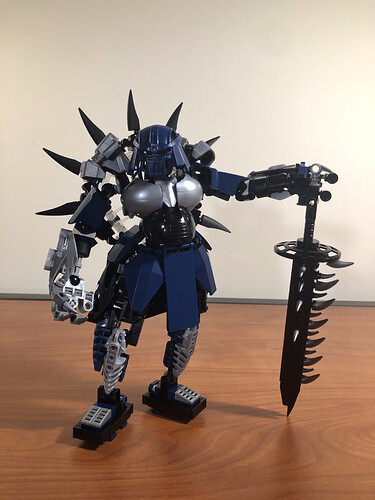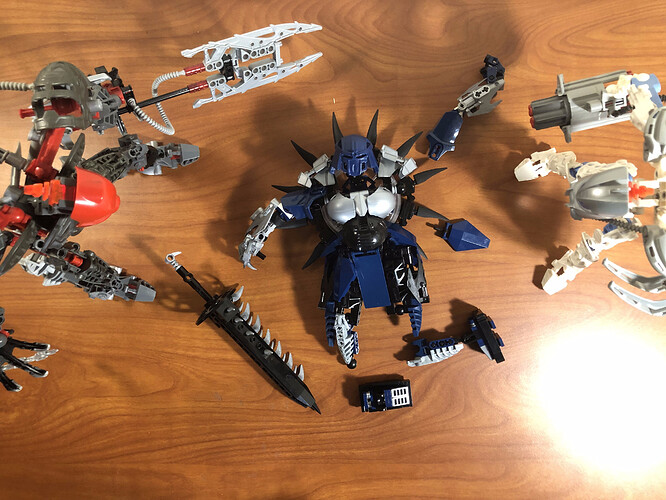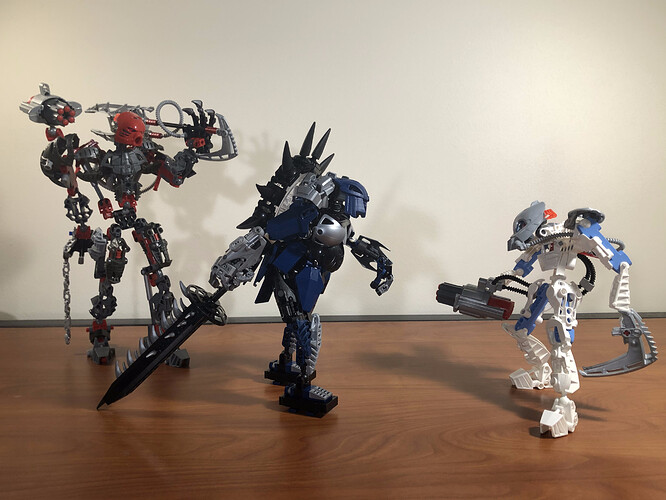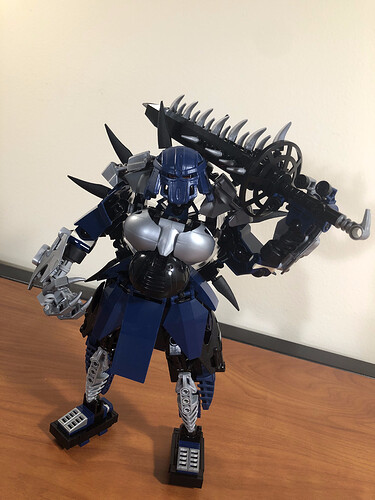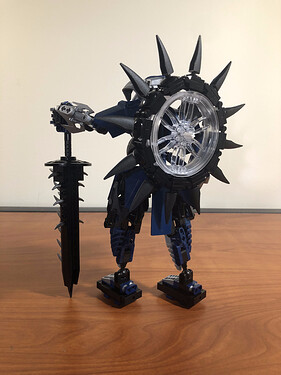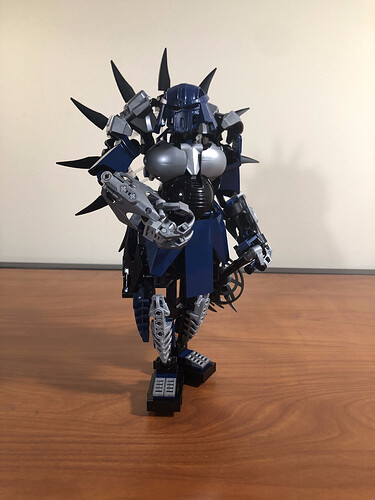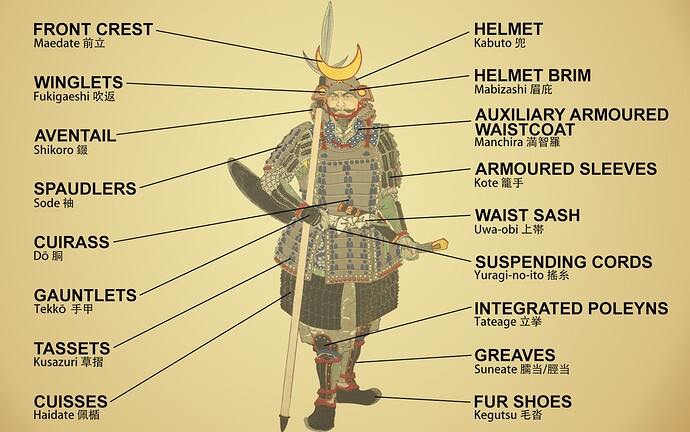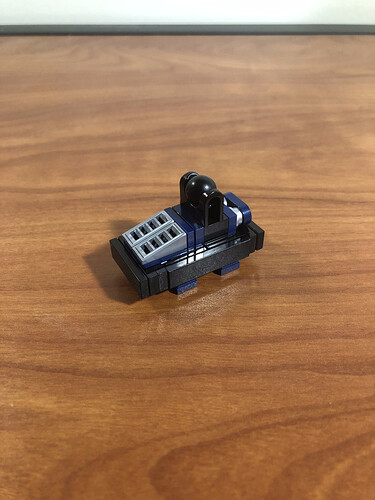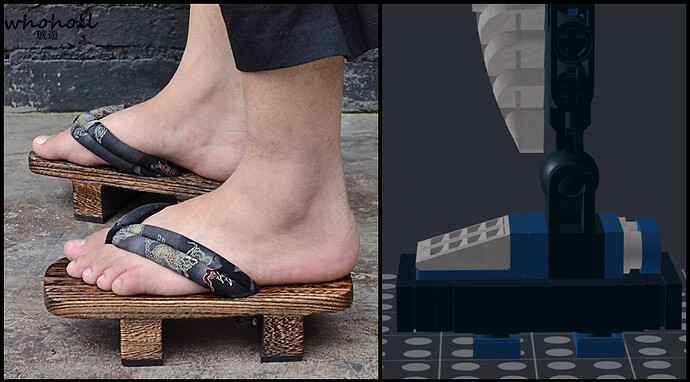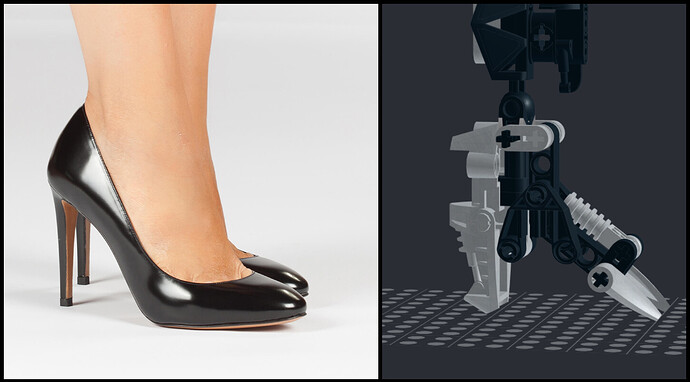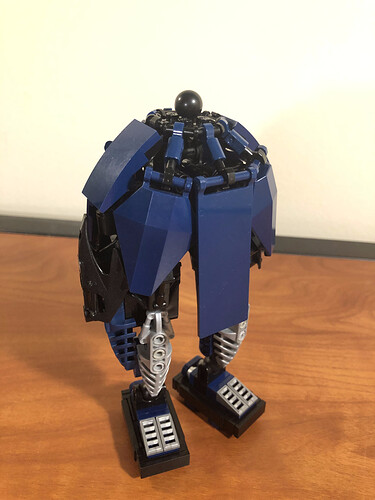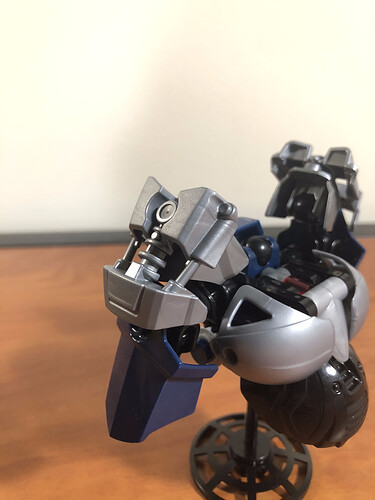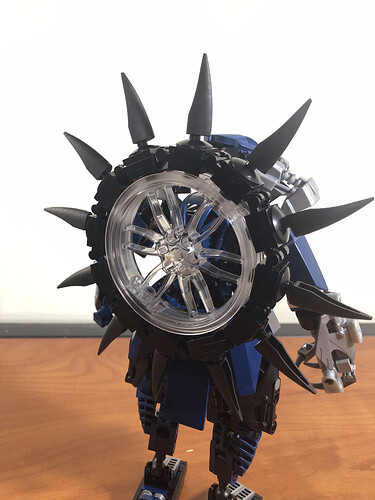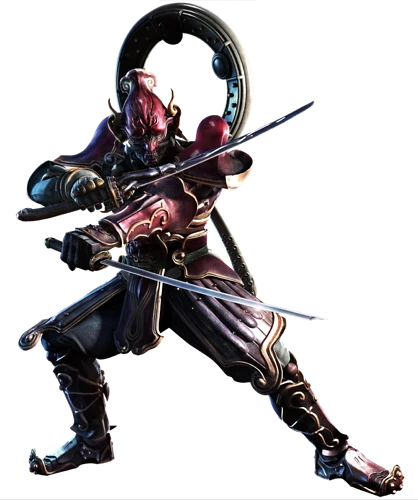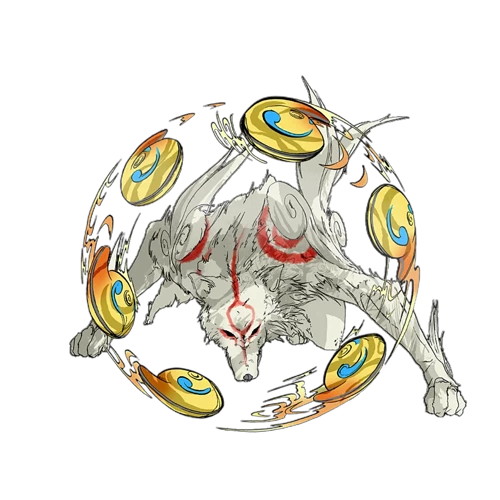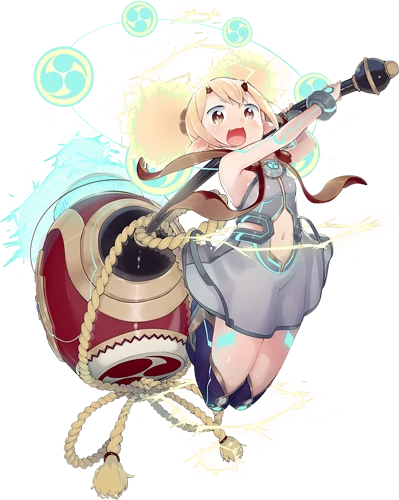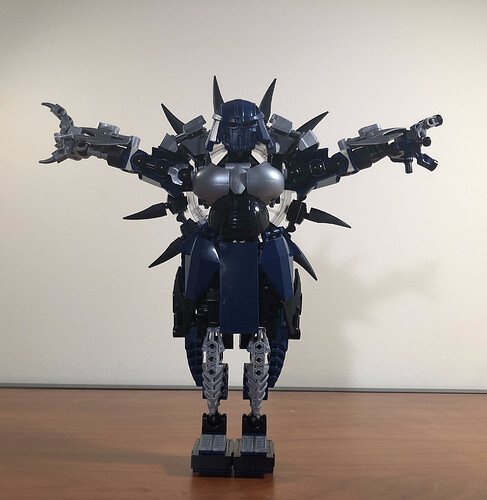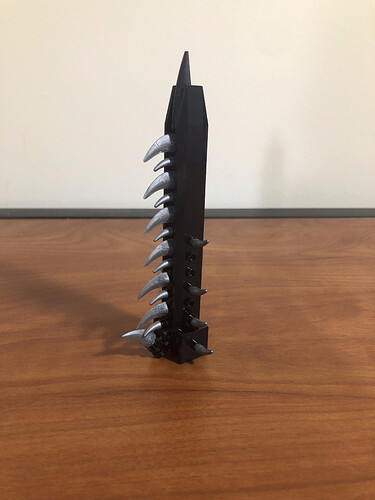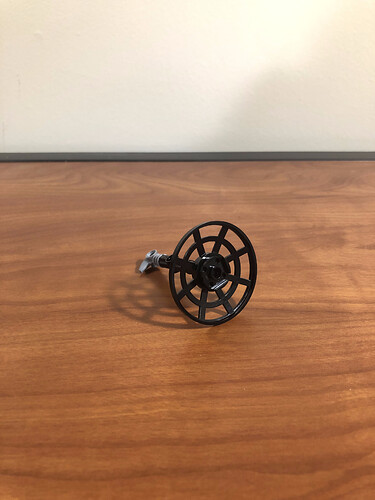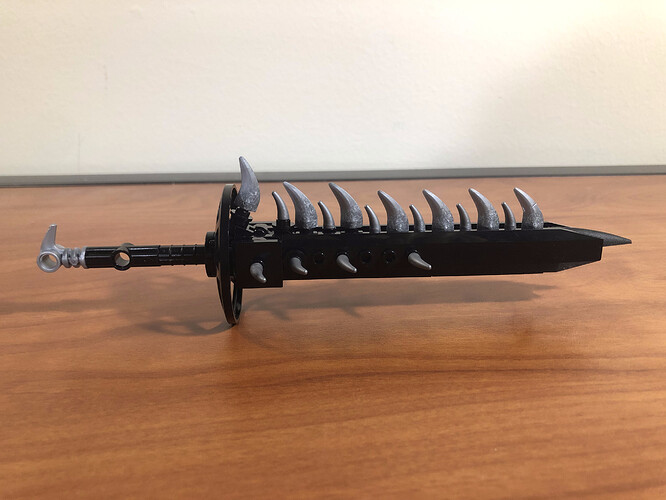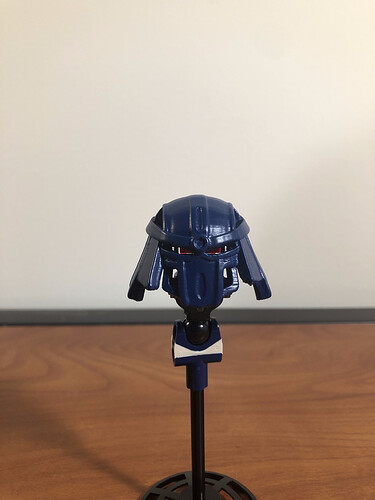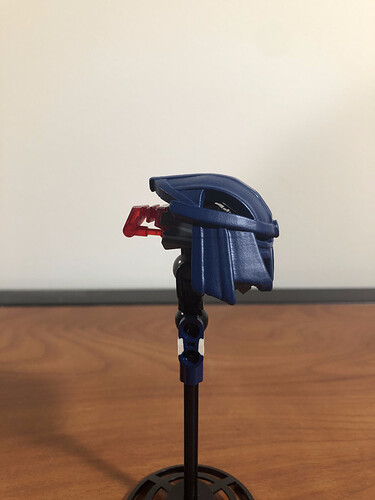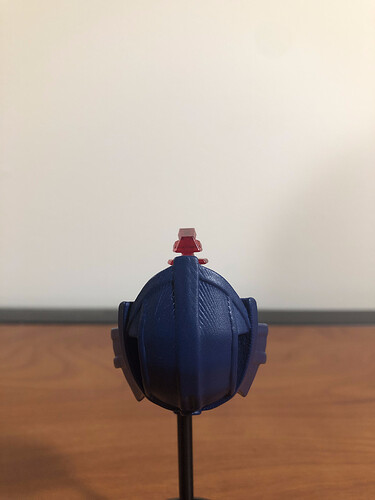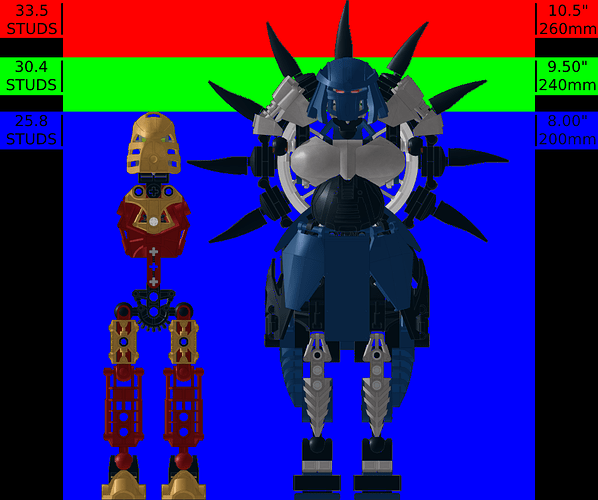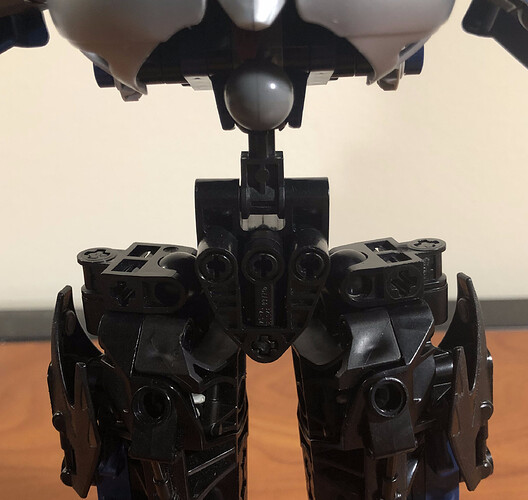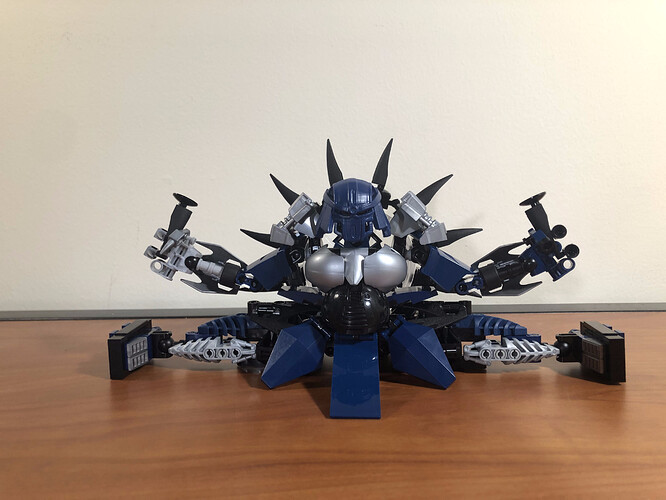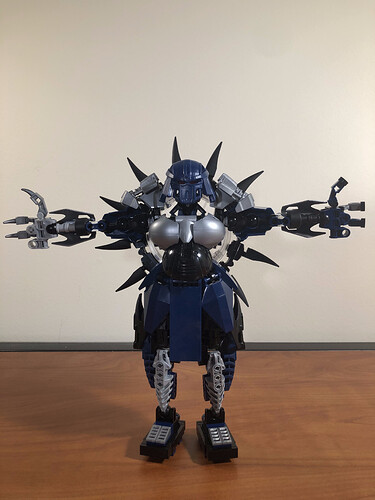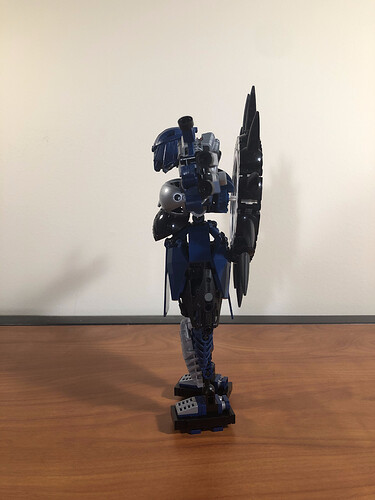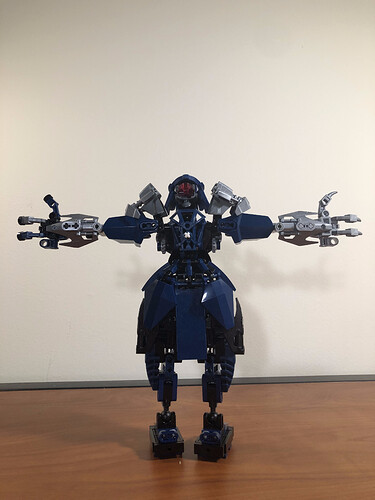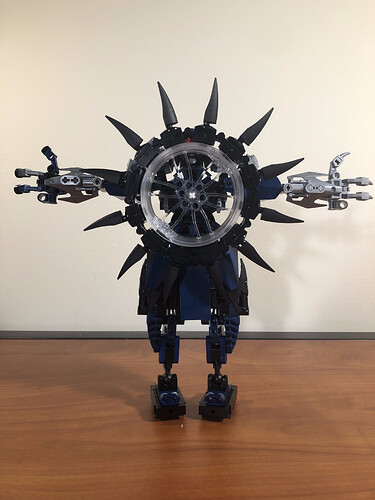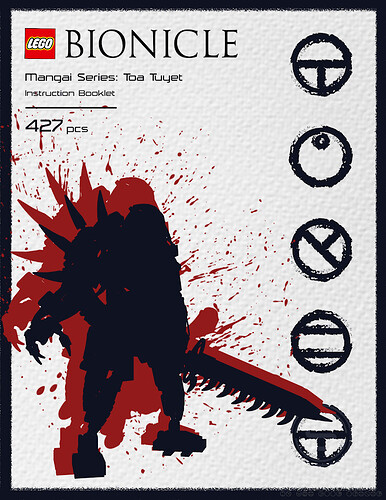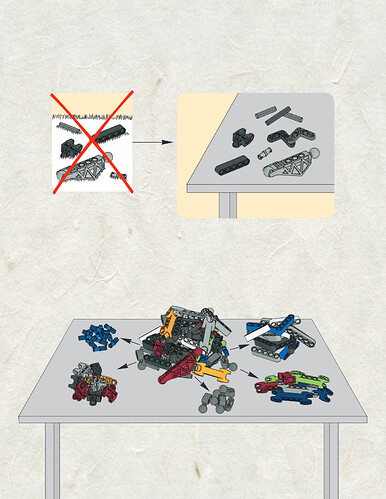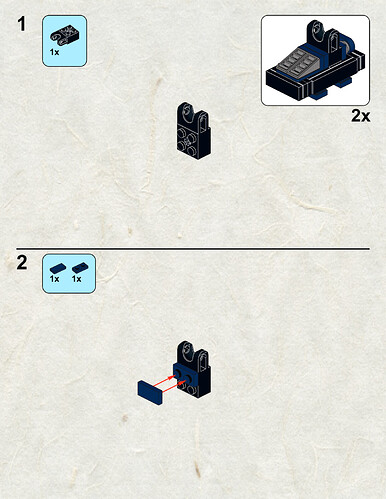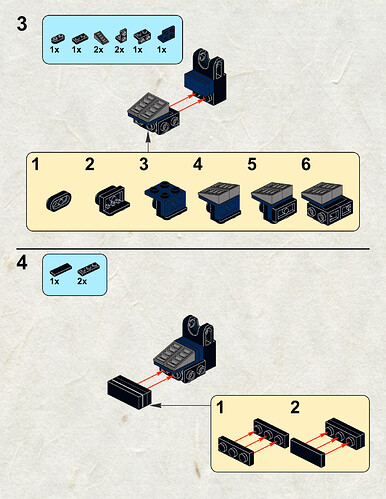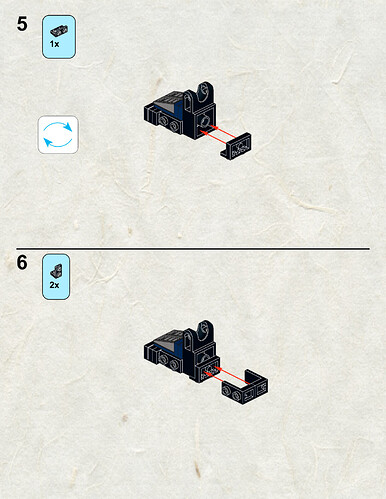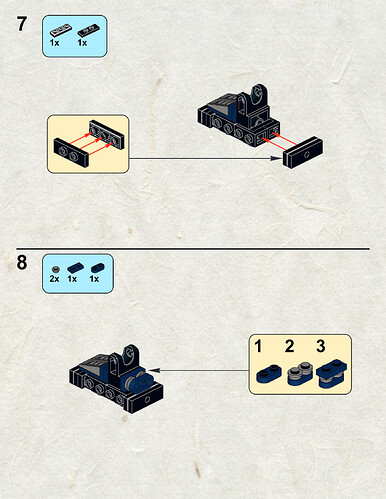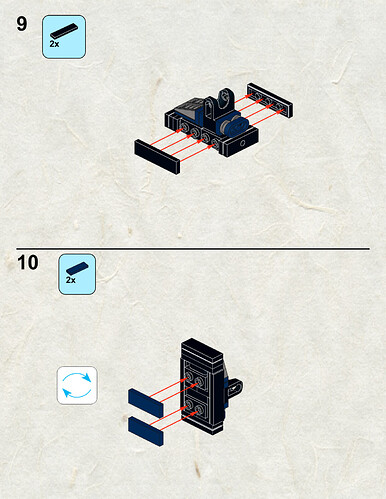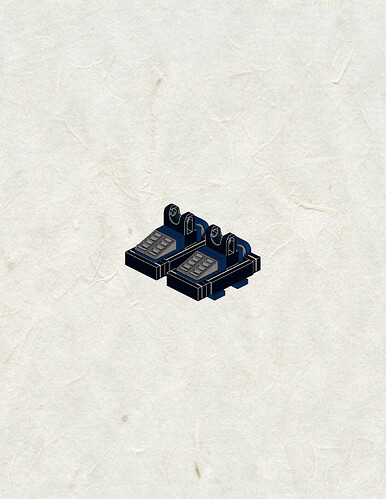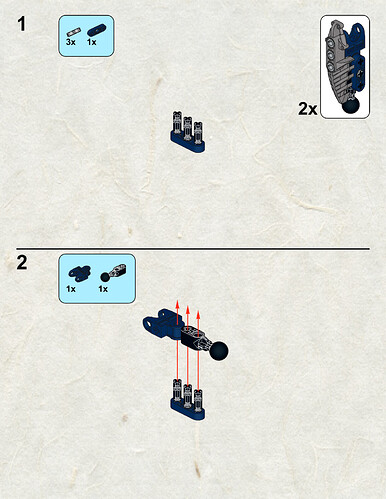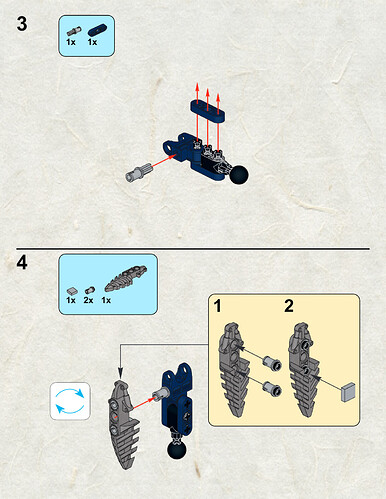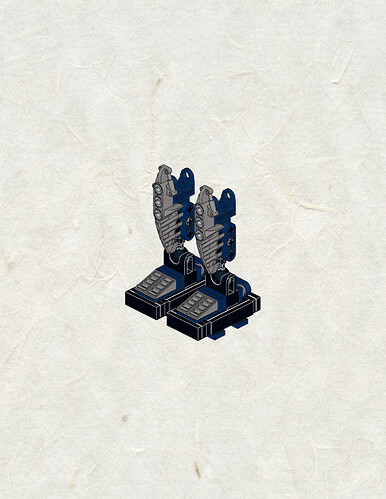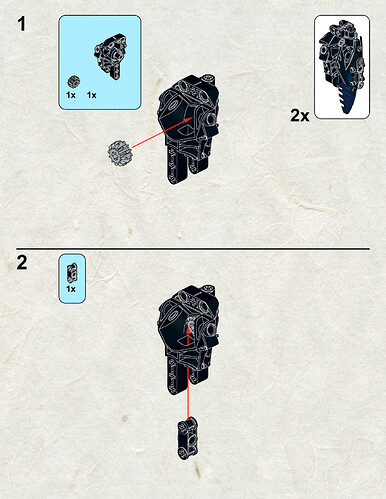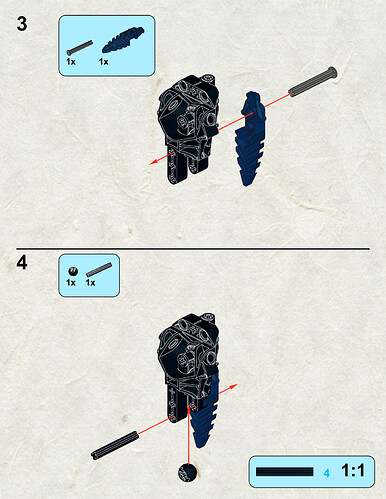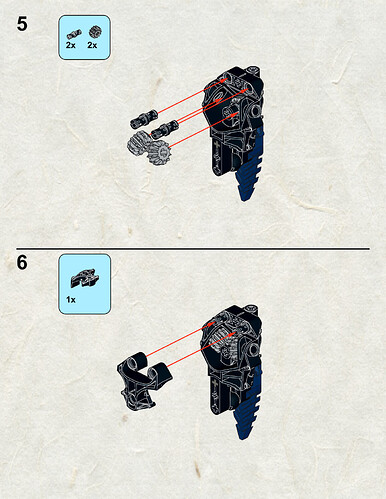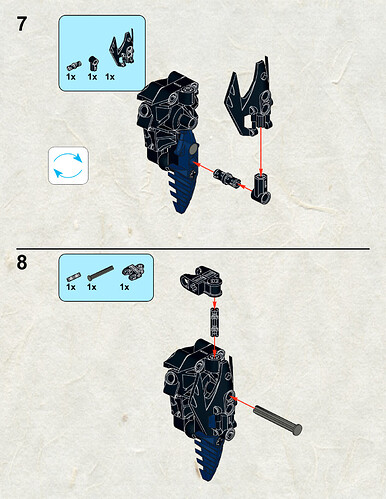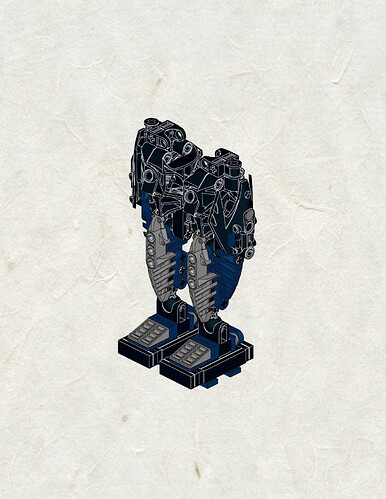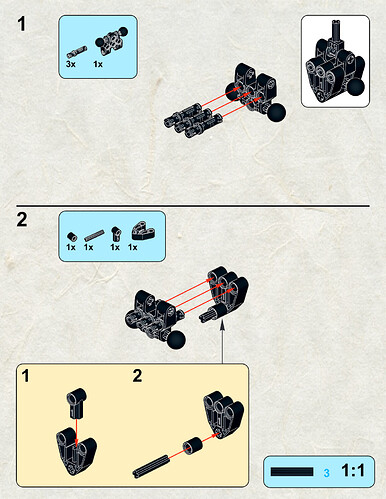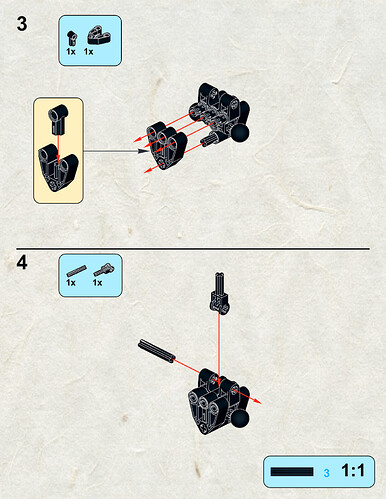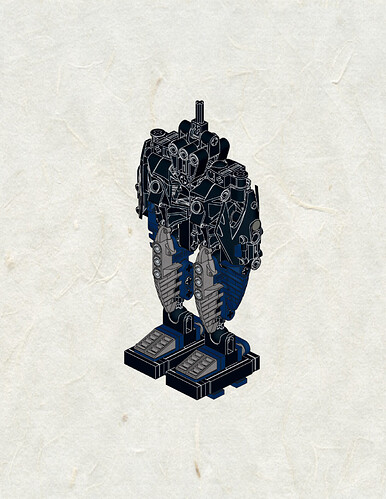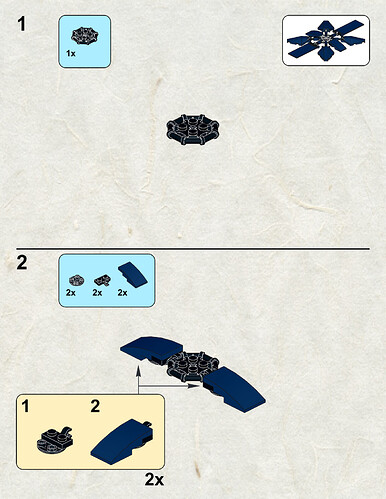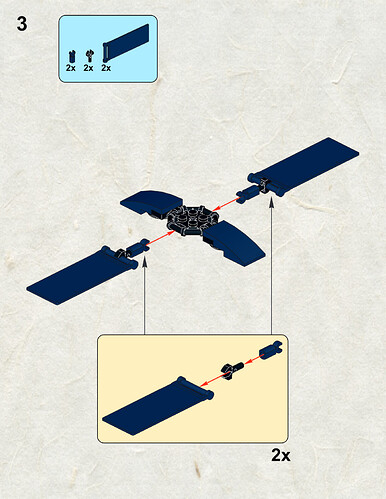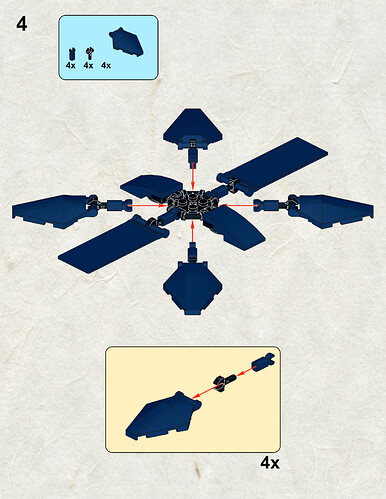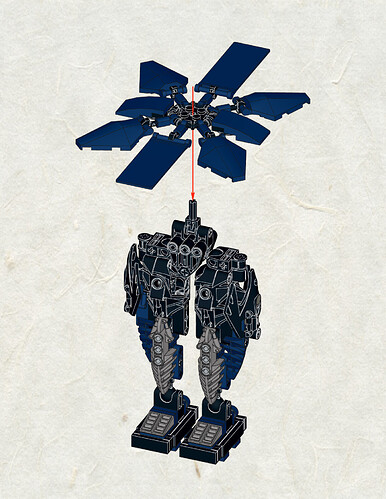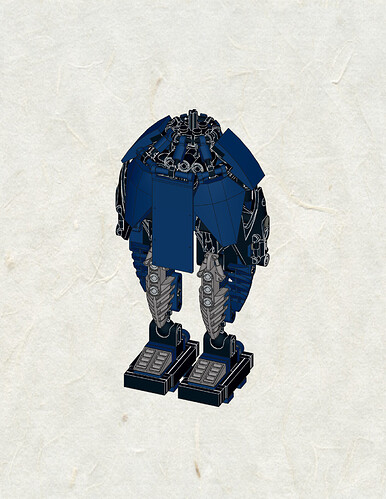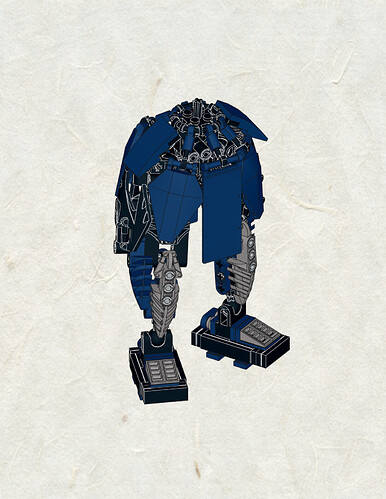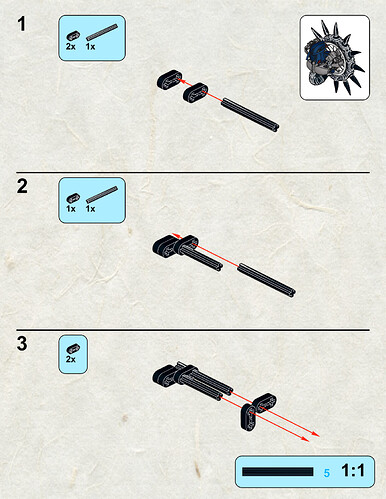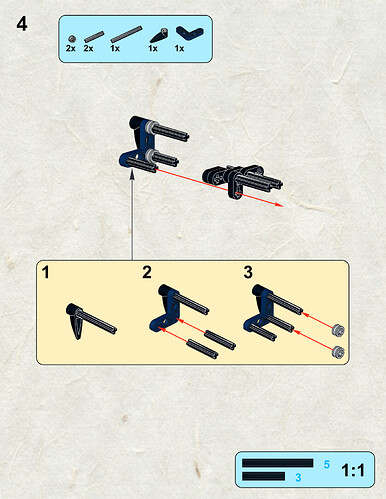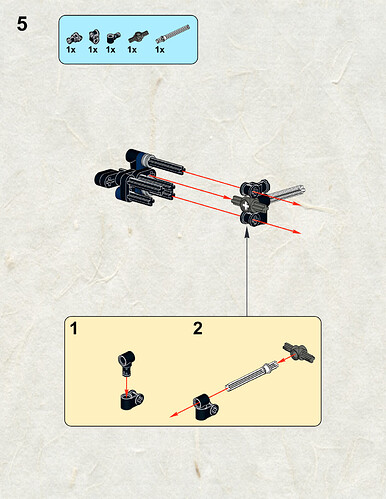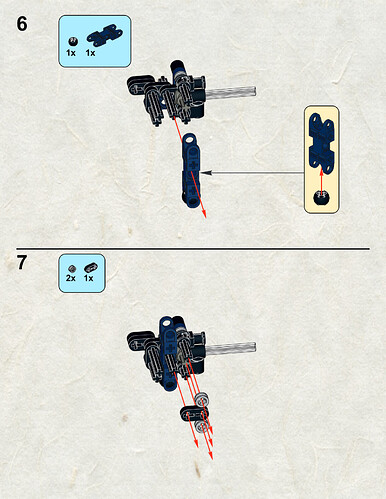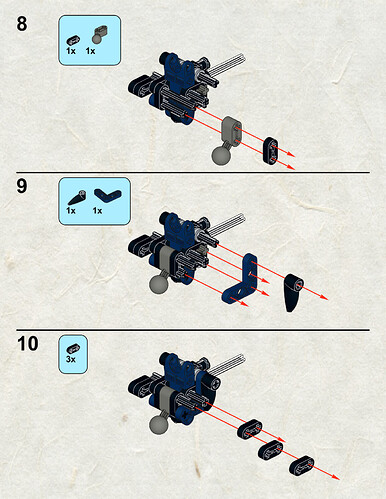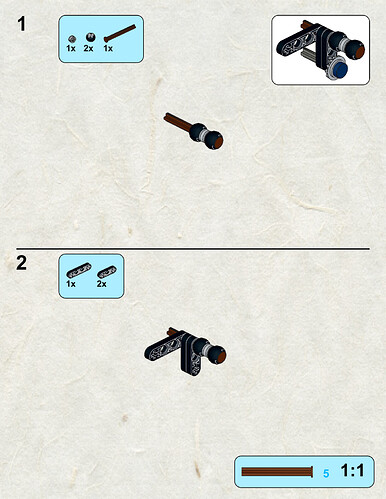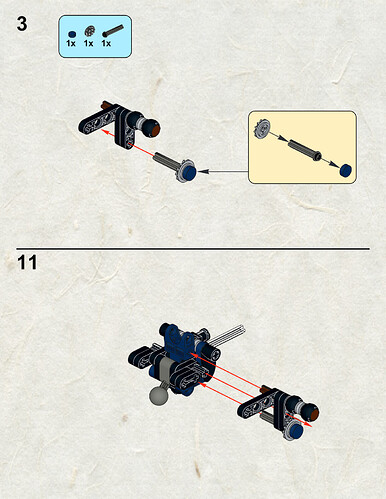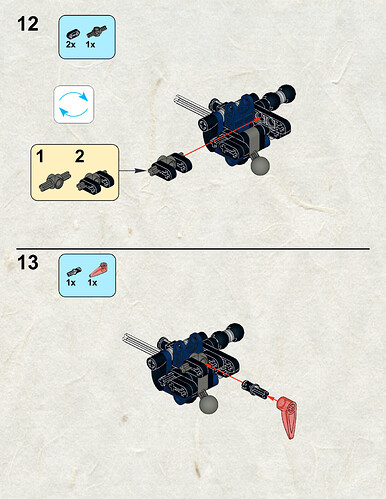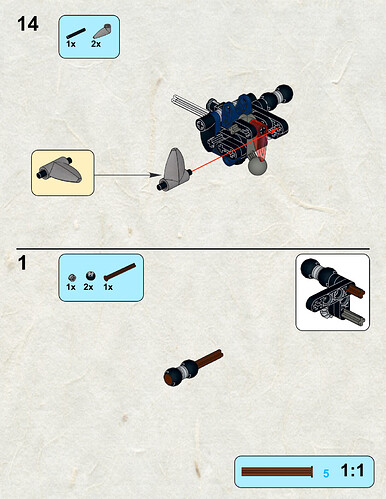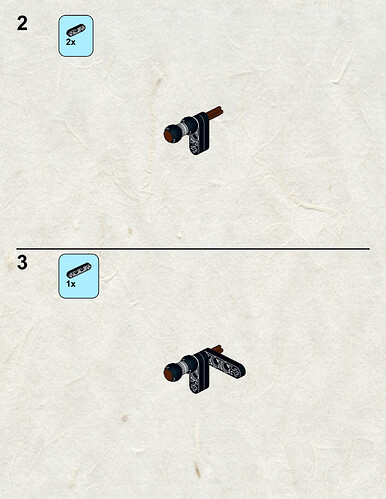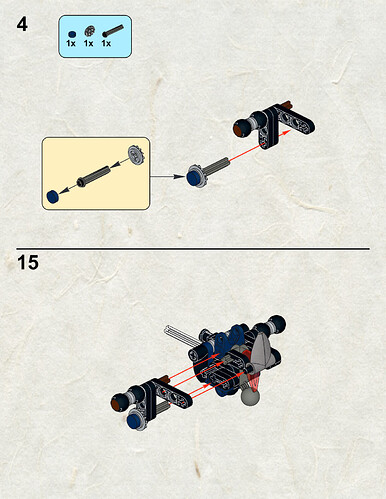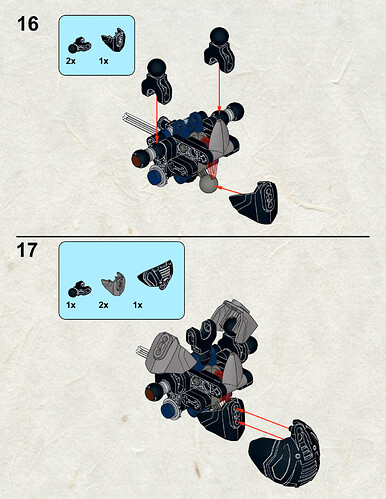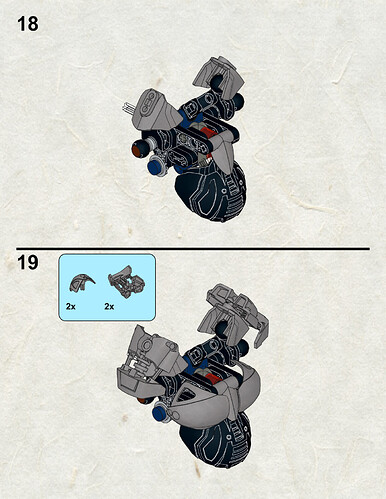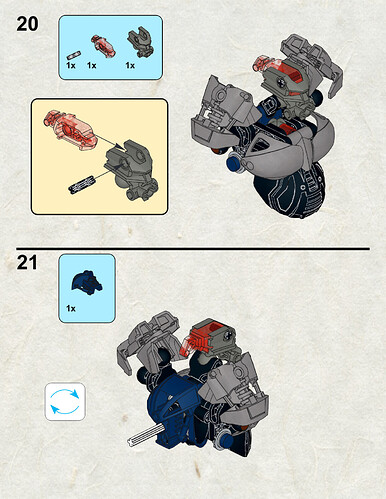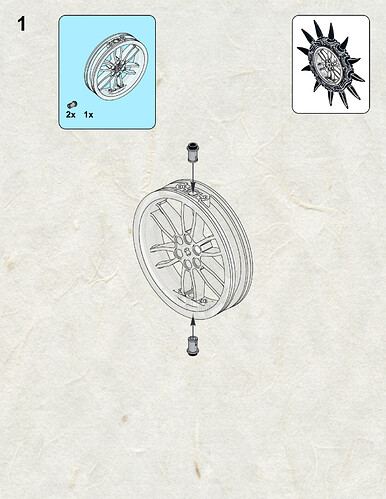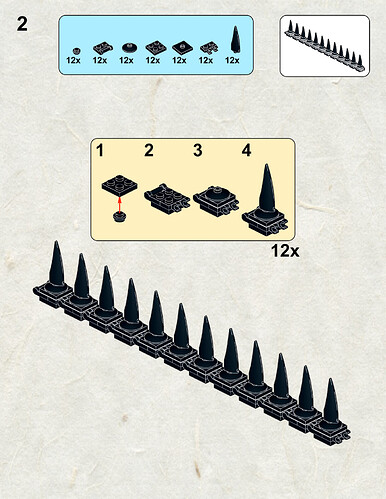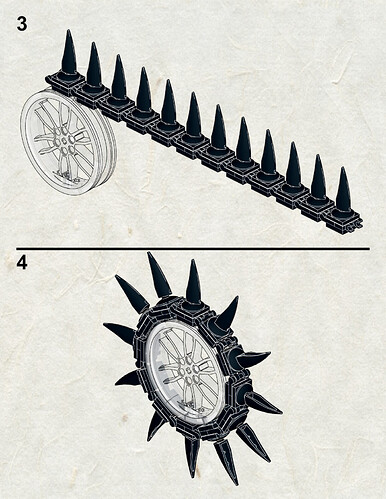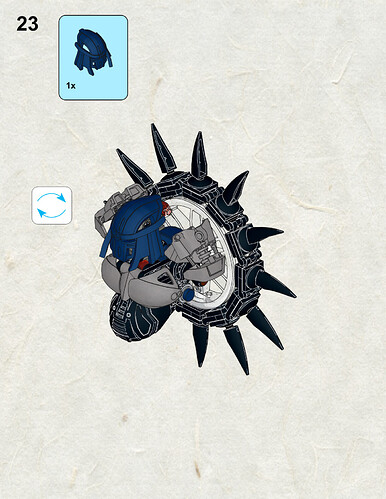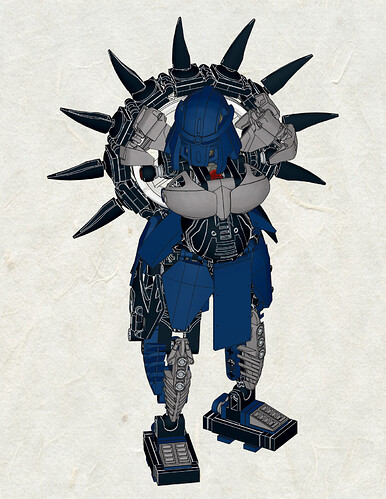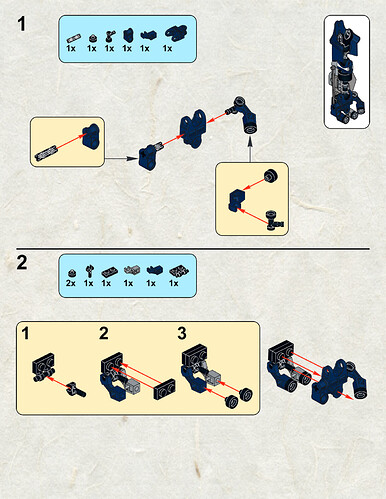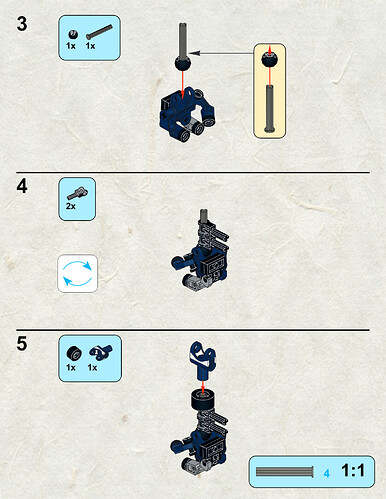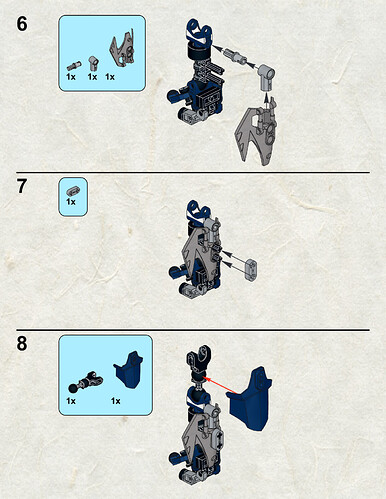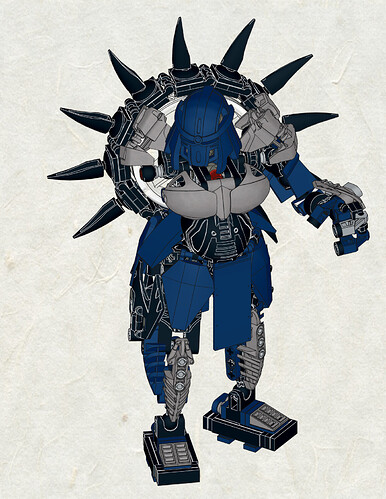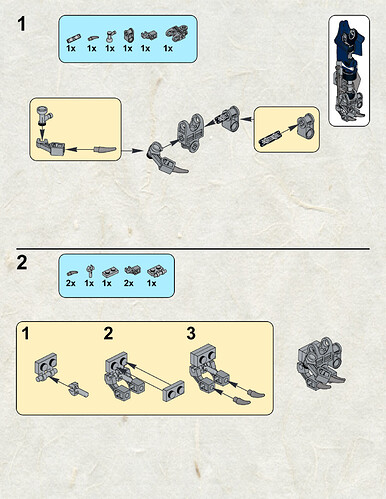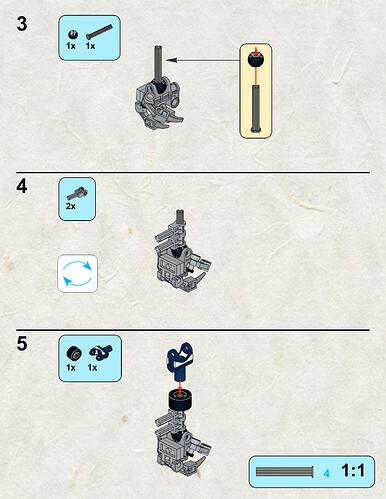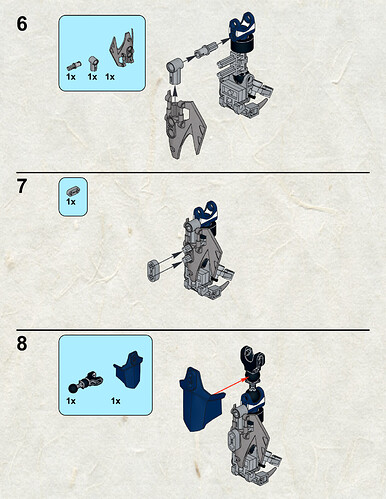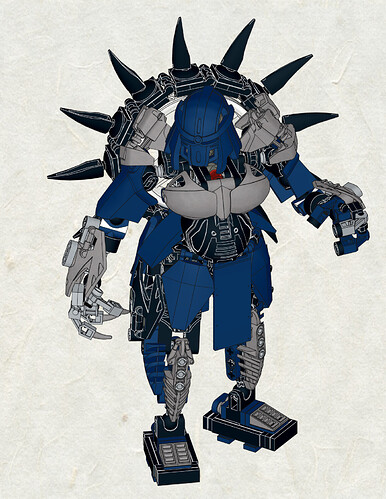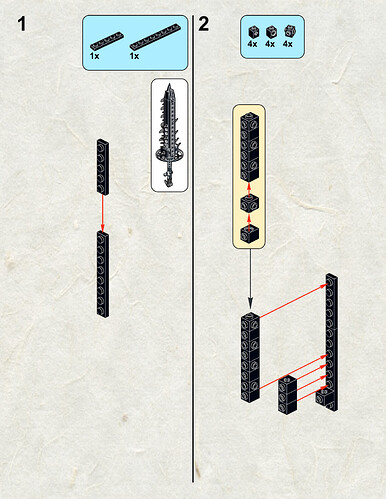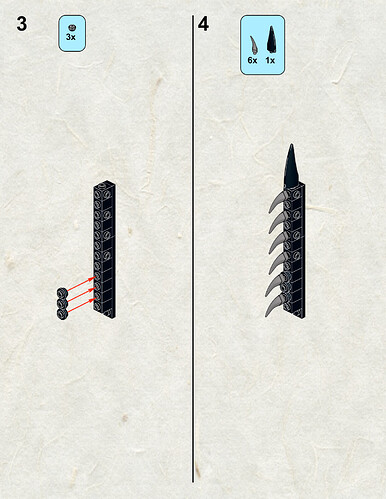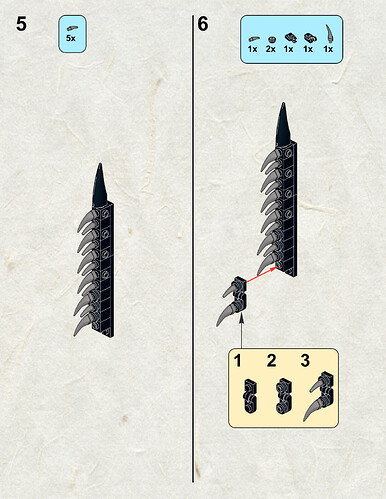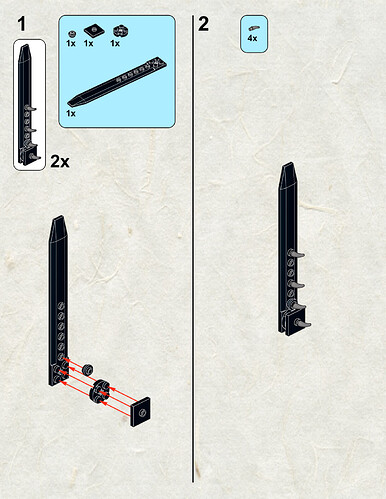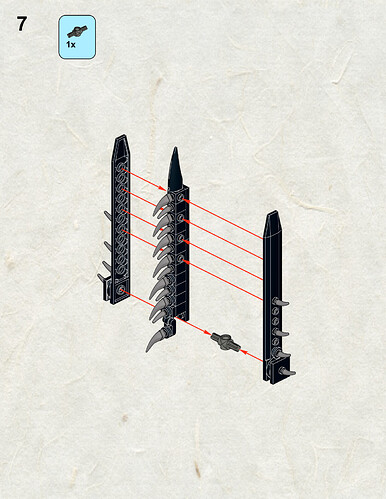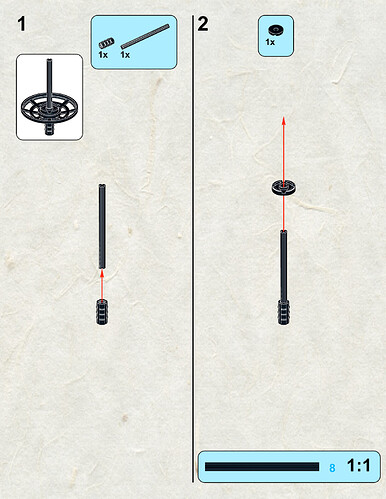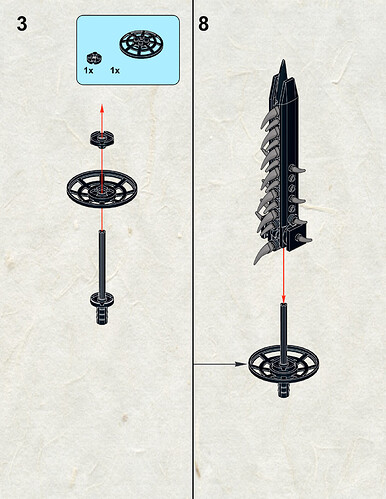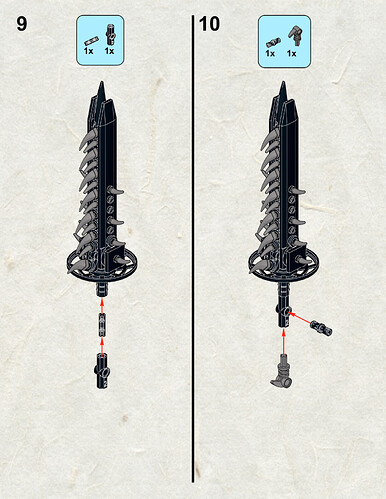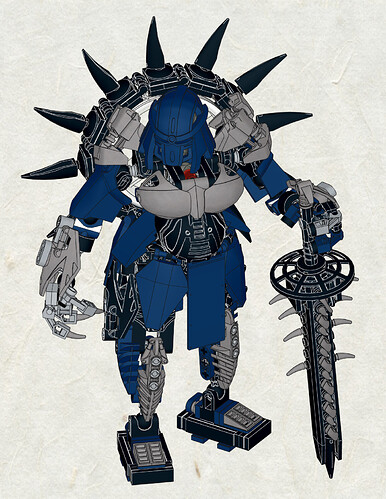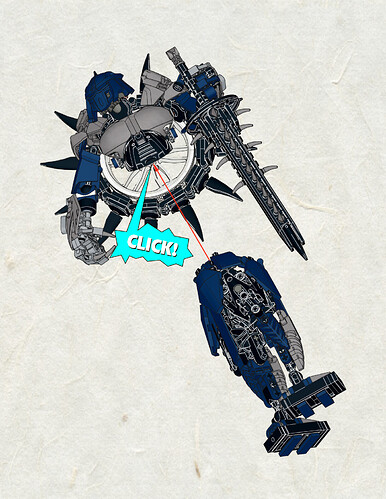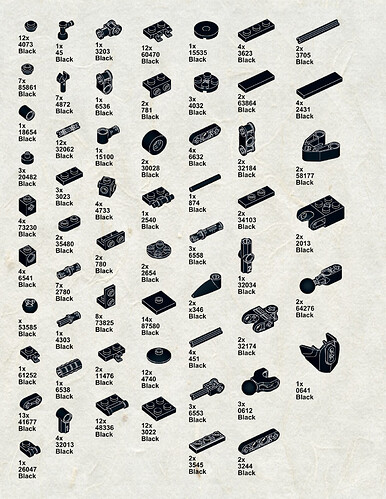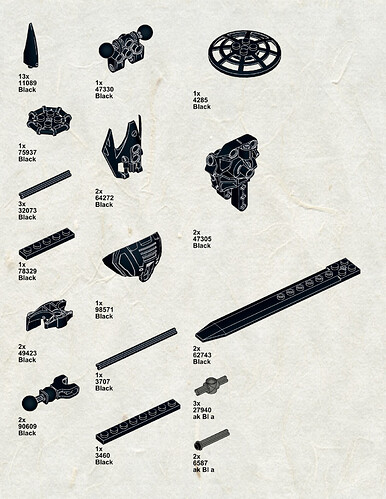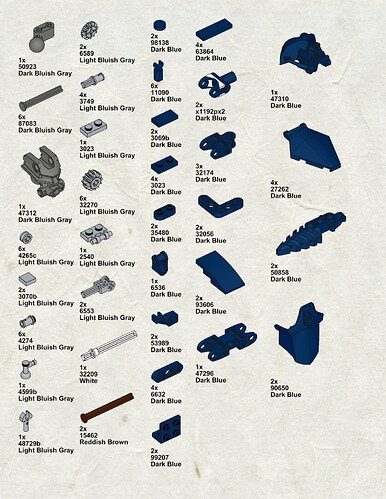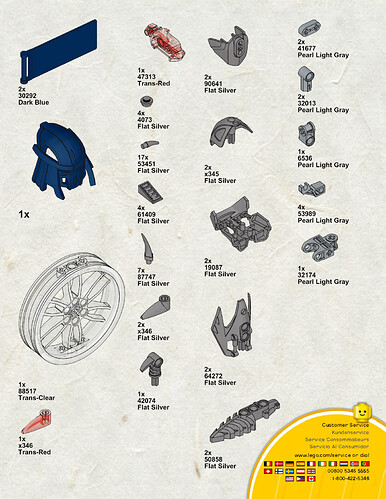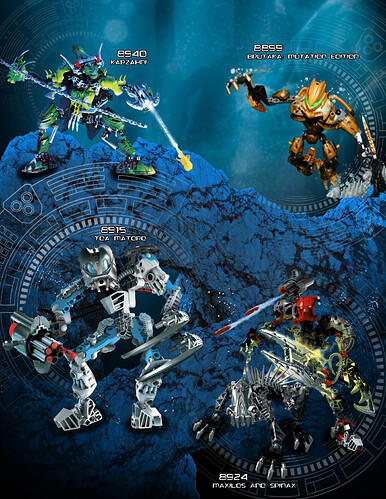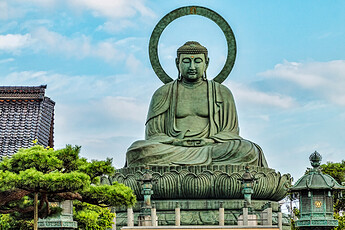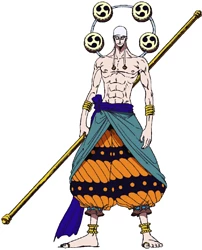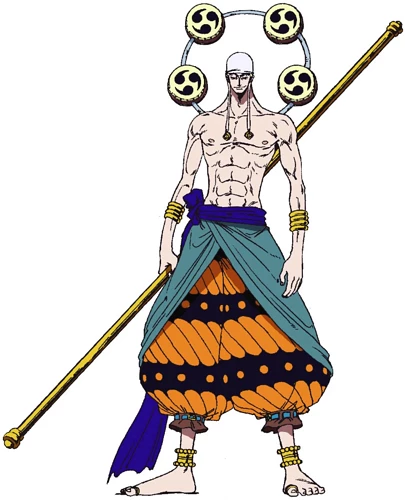A decade ago, I first read the final battle in The Many Deaths of Toa Tuyet. Even after all this time, I can quite clearly recall the image of her conjured by this sentence, which took place immediately after she watches Lhikan find the Nui Stone in her quarters.
“Tuyet rose. To her credit, she didn't seem nervous or taken aback. She was colder than most Ice Toa Lhikan had known, he had to give her that.”
I imagined her slowly standing up, casting a massive shadow across the room. Unlimbering her jagged arms, she completely dwarfed Lhikan.
For my Tuyet, I did my best to recreate that same feeling of dread I felt one decade ago.
I’m happy to say that I achieved it.
With my Tuyet, scale was everything. I made her a bruiser; no matter how you slice it, she outmatched Lhikan (and nearly every other toa too) in sheer scale. I did this to try and convey the raw, brutal power of the Nui Stone, making her instantly the most imposing figure in the room.
CULTURAL INSPIRATIONS & INLORE DESIGN DECISIONS]
Tuyet’s idea of a toa is about as different as can be from Lhikan’s [a dark mirror of his, if you will], so I gave her a design to match. Tuyet has heavy armor- a contrast to Lhikan’s light armor. Where Tuyet appears strong, Lhikan appears agile. Where Tuyet has mostly muted armor, Lhikan has bright armor. Tuyet and Lhikan are polar opposite character-wise, so I tried to give my Tuyet a similarly polarized design.
Continuing with the thematic inspiration for this build, I was inspired to make Tuyet look like a corrupted Samurai. Samurai are arguably known best for their strict honor code, and Tuyet is notably devoid of honor. By making Tuyet appear as a corrupted version of such a noble warrior, I feel I was able to imply something of her own soul’s corruption.
Another reason my Tuyet was inspired by a Samurai is that I wanted her armor to appear visually distinct from Lhikan, and any other toa we’ve seen thus far in canon. Unlike a group like the Mata, Metru, or Mahri who all hailed from the same place, the Toa Mangai were all basically random warriors from across the universe who came to the aid of Metru Nui at the call of Turaga Lhikan. In my mind I interpret this as a reason to make the Mangai look as different as possible for one another.
(As a side note, I also have other unique armor styles and frames planned for my Nidhiki and Naho, to help accentuate the diversity in this team’s armor. I’m very excited to share them with you in the future!)
And now, I’d like to highlight all the design elements that are meant to draw from Samurai armor.
[Geta and Their Relevance to My Tuyet]
The first thing on my list of Samurai armor, wooden sandals called geta, were not widely worn by Samurai, due to geta not being very well armored (they’re sandals). However, I chose to give my Tuyet geta in spite of this because I feel the functional use of the shoes adds an interesting thematic layer to her character design.
One of the purposes of Geta is to keep people’s feet above ground if it is wet, as geta keep a wearer’s feet several inches above the ground (and any puddles that may have collected down there). Translated into the world of Bionicle, my Tuyet is raised above the water, what is usually considered a ga-toa’s source of power. This suggests that she draws power from sources outside of normal nature. Tuyet choosing to distance herself from water may also imply she feels herself above the duty of a Toa of Water.
Aside from the character implications the geta give to Tuyet, I also think the build is super fun, they’re one of my most favorite parts of the build. Her feet are rectangular, with two teeth running along the bottom, mimicking the shape of the Geta. On top of the rectangular black portion of her feet is the dark blue portion, giving the appearance of dark blue “skin” on top of a black “shoe”.
I view the whole piece as her foot, since Bionicle characters don’t need shoes. Like, her foot just happens to look like a piece of footwear from earth, similar to how Roodaka’s feet look like high heels. Or how Umbra’s look like heelys. To illustrate this point, here is a comparison between Roodaka and my Tuyet’s feet and their real-world counterparts.
[Pictured above, my Tuyet’s feet compared to real-life geta. Pictured below, Roodaka’s feet compared to real-life high heels.
[Kusazuri & Soda]
Kusazuri were a part of armor used to protect the lower body of a Samurai, not dissimilar to European faulds. However, kusazuri were longer than faulds, meant to protect both a Samurai’s Pelvis and upper legs, which weren’t maneuverable on horseback
Sode were the shoulderguards of a Samurai’s armor. Both Sode and Kusazuri are characteristically rectangular. In my Tuyet, I’ve recreated the rectangular shape. The Kusazuri in particular were very carefully chosen to leave a lot of empty room around the pelvis of the build, allowing for a high degree of leg mobility (see the articulation tab below for further details.)
[The Big Floating Gear and My Confusion as to Its Cultural Roots]
A fairly common design fixture I see in characters set in feudal Japan is a giant floating circle behind the character’s shoulder blades. Sometimes the circle’s diameter is shoulder width, other times it is the width of the character’s arm span, it all depends. Below I’ve included three examples of this design being (from Left to Right) Yoshimitsu from Tekken Tag Tournament 2, Amaterasu from Okami equipped with the devout beads, and Electra from Xenoblade Chronicles 2.
Now, as you can probably tell by all the research put into different types of sword and the parts of Samurai armor I did for this moc, I like doing in depth research for these mocs. The only issue is, I’m not fully confident on what the cultural inspiration for these rings are. This surprised me in my research, since these floating rings seem so ubiquitous in Japanese fiction that I assumed it’d be easy to discover what they are. However, after months of searching, I believe I’ve found the source.
I believe the origin of these rings is the Shinto god of thunder, Raijin. Pictured below is 17th century artist Tawaraya Sotatsu’s interpretation of Raijin as seen in his famous painting Fujin-Raijin-zu. In it, you can see that Raijin is holding hammers in his fists, while drums encircle him. It is said that Raijin was so powerful that, when he plays on his drums, he causes the sound of a thunderclap. In many depictions, Raijin’s drums are seen encircling him.
If you like this art, btw,
and if you have the time, I highly recommend looking up the full painting of Fujin-Raijin-zu. I cropped out nearly half of the work so we could focus on Raijin. However, the full piece also depicts Fujin, the wind god. His bag of winds is also depicted. While the design language of Raijin’s encircling drums seems more common in fiction today, I can think of at least two characters that have similar “bags of wind” wrapping above their heads.
You may notice that many characters that have these floating circles behind them have some kind of lightning power, though this is not always the case. For instance, using the examples I gave above, Electra from Xenoblade 2 is clearly electricity themed, while many of the rosary types of weapons used in Okami do lightning damage. However, Yoshimitsu to my knowledge doesn’t use electricity or thunder powers at all, so it seems as though these floating rings are flexible in what kinds of characters can use them. Either that, or Yoshimitsu’s floating ring is a reference to some other cultural item, I can not be sure.
So, history lesson over, how does this all relate to my Tuyet? Why does my Tuyet choose to wear a giant floating circle on her back “in universe”? Well, we see in that iconic image of the Great Spirit Robot from the Mata Nui Saga (pictured below) that Mata Nui would project massive circles around himself when scanning planets. Perhaps legends of these halos are present inside the MU.
I imagine halos such as these are religious symbols of Mata Nui wherever Tuyet is from. Tuyet definitely has a god-complex, saying in TMDoTT “What the League of Six Kingdoms tried to do while they were active, I will do – impose law and order on everything that lives.” I could definitely see Tuyet donning the symbol of a god out of arrogance or insanity.
How does it float in lore? I’m not really sure, I just thought it looked cool. Here’s a few answers to this question that might be correct.
A. Levitation Microdisks
B. Nui Stone Energy
C. It’s not actually floating it’s just set on transparent spokes like the model.
D. Magic
As of posting this, I headcanon “D”. However, on another day I could believe any other option on this list. If this Tuyet wins, you’re free to make-it-your-own, haha.
[Tsuba and the Design Philosophy behind My Barbed Broadsword]
Finding the design for my Barbed Broadsword was incredibly difficult. While my Tuyet’s aesthetic was strongly informed by samurai armor, I felt as though taking large inspiration from a katana, the sword of a samurai, would not fit my Tuyet’s design language. Katana are typically seen as agile, precision weapons, while Tuyet’s design lends her being more of a bruiser.
In addition, this Greg Quote, made infamous from the TTV Canon Contest discussion thread, says that Tuyet’s Barbed Broadsword was “a sword with curved barbs coming out of the sides, so that when you pull it out you do more damage.” To me the verbage “pull it out” implied that the Barbed Broadsword was primarily a thrusting weapon; thrust in, pull out. Katana are known for their powerful cutting strength due to their curved shape, but are weak when it comes to thrusts. Broadswords on the other hand are perfect for thrusts.
With both of those factors in mind, I decided that I wanted my Barbed Broadsword to be closer to a western broadsword than a katana. Leaning heavily into my Tuyet’s identity as a tank, I aimed to make my Barbed Broadsword as large as possible to visualize how powerful she is.
However, I still wanted my sword to have some influence from the katana, as I felt a fully western sword would feel at odds with her design. After performing some research into the individual parts of a broadsword and a katana, I discovered my solution.
Tsuba were circular handguards placed between the blade and hilt of a katana. The purpose of the tsuba was to protect the hands of a katana’s wielder, like the crossguard of a western sword. Tsuba were often given intricate carvings on their flat faces, typically depicting scenes of nature, making them one of the most distinct parts of the weapon. I decided to include a circular handguard on my Barbed Broadsword to evoke a tsuba.
And there you have it, my complete barbed broadsword.
[Galvanize’ Original Mask of Intangibility]
Finally, we come to the kanohi I chose to give my Tuyet. I came across my preferred mask late into the design process, in about mid January. At this point I had already decided on focusing heavily on a samurai aesthetic for my Tuyet, and was hoping to find a kanohi to match. Leafing through my custom parts folder in stud.io. Galva’s Old Mask of Intangibility immediately stood out as the perfect mask. It heavily evoked the feel of a kabuto, the helmet piece of a samurai’s armor, while also feeling different enough to fit in the unique world of bionicle. In addition, it was wide, heavy, and sinister looking, all things that fit with my Tuyet’s design language. The smoothly ridged sides of the mask even had a similar look to the CCBS shells I had used on my Tuyet’s shoulders and arms, it was practically perfect.
HEIGHT COMPARISON WITH LHIKAN
In terms of height, my Tuyet is designed to scale with Lhikan. I intentionally made my Tuyet taller than Lhikan to help make Lhikan’s fight against her feel more desperate. Tuyet (head to toe) is roughly 30.4 studs tall (9.50” / 240mm) compared to Lhikan’s 25.8 studs (8.00” / 200mm).
If you’re interested about the height with the gear, that brings Tuyet’s height to roughly 33.5 studs (10.5” / 260mm)
ARTICULATION
I’m sure you’re all worried about articulation, given how bulky her armor is. I was very conscious of her articulation from the start. I engineered her faulds to be able to fold upwards, allowing her a nearly full range of motion in her legs. Her leg mobility is so wide that she is able to hit a full split (if you take off two of the BFG’s teeth). The shoulders aren’t as good but are still able to reach a dynamic range of poses.
If you want statistics, here you are:
LEGS/FEET = 3 POA each
-
Ankles have full range of articulation
-
Knees go from 180° to ~60°
-
Thighs have nearly full range up to 90° from anatomical position, though you must move the faulds around a bit to get some of the more extreme poses.
WAIST = 1 POA
- Waist can rotate 360° and bend 30° backwards
HEAD/NECK = 2 POA
-
Neck base can bend from 90° (up) to ~30° (towards heartlight)
-
Head has full mobility
o [NOTE, some head/neck posability can only be achieved by repositioning the spaulders]
ARMS = 3 POA each
- Shoulders can bend 360° from forward to back, and ~80° from the side (though higher can be achieved by externally/internally rotating the arm.)
o [NOTE, shoulder posability can only be achieved by repositioning the spaulders]
-
Elbows can move 90° in either direction and can be externally/internally rotated.
-
Wrists have full mobility in the direction of the palm, however mobility in the dorsal direction is stopped at the neutral position.
DIGITS = 4 POA each
-
Two fingers per hand, each of which can bend 45° out and 90° in
-
One thumb per hand (we specify b/c of MoL Makuta) has two POA and can grasp the hilt of the sword.
MISCELLANEOUS
-
Six faulds (front/back) have 5 POA
-
Two faulds (side-side) have 2 POA
-
Both spaulders each have 2 POA
-
The gear has 1 POA
TOTAL POA = 62 (23 Standard + 39 Misc.)
CONCEPT ART
Finally, before I go, I’d like to give out a bunch of thanks!
First, a big thanks to @Synnova32, who made the absolutely beautiful coverpage for my Tuyet’s instruction manual. He also helped me brainstorm fixes for my model. If you’ve got a chance, go check out his Tuyet too, it’s outstanding, inspired by the Soul Calibur and Tekken franchises, while also fitting in his own unique skeletal design elements, I highly recommend it. I’m particularly a fan of his aesthetic use of wormgears.
Second, I’d like to thank my friends @TakuaNova, GarakParadox, @EBdrawsstuff, and @Chedzu, who all kept an eye out for some of the rare parts I was hunting for (the Silver Vorox plates were an unexpectedly big challenge.) On top of also giving me feedback.
Finally, please check out @Galva_Nize’ fearsome Old Mask of Intangibility, which really helped my Tuyet’s Samurai appearance come together as well as it did.
{4-18-22 EDIT} Additional info for Duckbrick's Fanon Contest
I should have made this more clear in my original post, but this is for Duckbricks’ community fanon contest for the appearance of Tuyet. There’s going to be a prize made by the talented resin printer lord, @Socketball. Me and many of my friends will be participating, and I’d love to see others hop in as well!
Finally, Duck suggested in the video linked above that we list the paints used in making our mocs if someone wants to replicate our looks. For myself, the only painted piece on the moc is the mask. So, here’s what I used to achieve my Mask of Intangibility.
- PRIMER: Tamiya’s Surface Primer (L)
- PAINT: Tamiya’s TS-15 Blue
- FINISH: The-Army-Painter’s Matt Varnish
This setup is not a perfect match for Metru Blue irl however. It’s slightly more saturated and … blue, I suppose. In comparison, Metru Blue seems a tad less vibrant and with a hint of green. The varnish also isn’t perfect, it has a slightly-off sheen to it all. You can’t really tell it in my images, but irl it’s noticable. It’s a great start for a firstimer like me, but I’d recommend you search for a better Metru Blue match, if you can find one.
Or, if you just want to replicate what I did, you can. Well, that’s all, have a great day, y’all!
